
Small space, big challenge Tips for managing multiple crops in a smaller greenhouse | 22



Small space, big challenge Tips for managing multiple crops in a smaller greenhouse | 22

CosMic Plants
Beamsville, Ontario
CosMic Plants, a premier Phalaenopsis grower in Ontario, initiated their first HPS to LED replacement in 2022 with the installation of Philips LED toplighting. Due to an almost 40% energy savings coupled with flexibility afforded by the dimmable LEDs, they continue to expand their LED install. “One of the things that drew us to Philips brand and Signify is the fact that it’s a large, strong, reputable company. We wanted to partner with a company that we know can stand behind their product.”

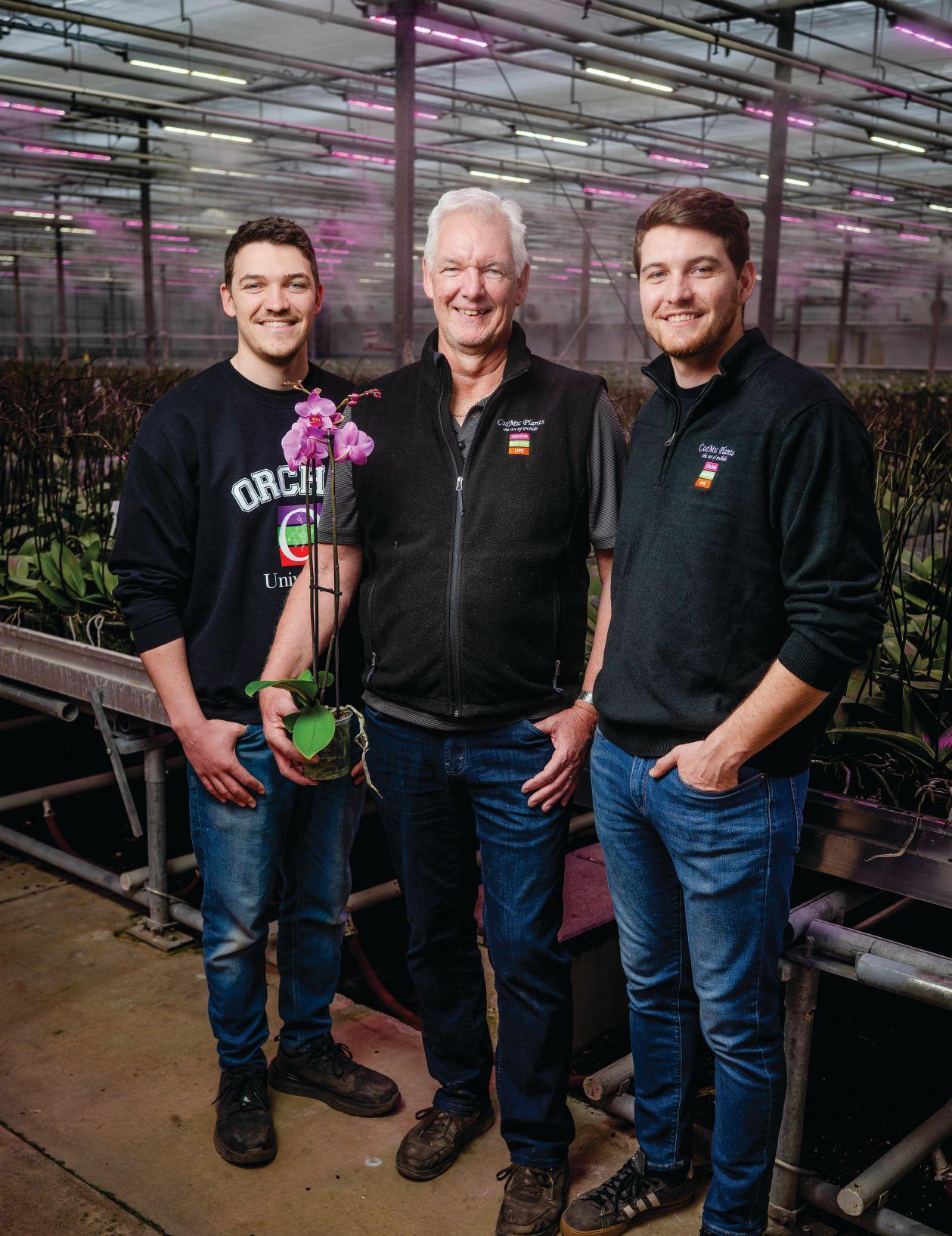

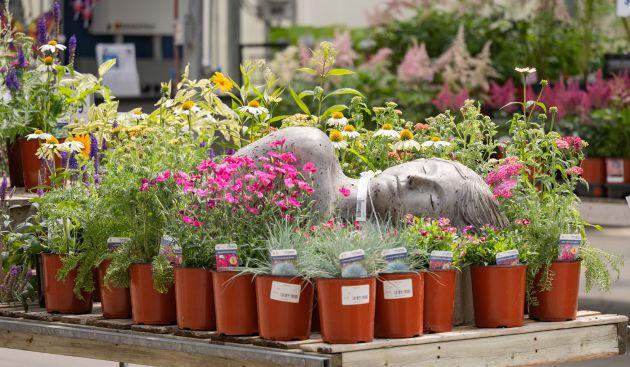
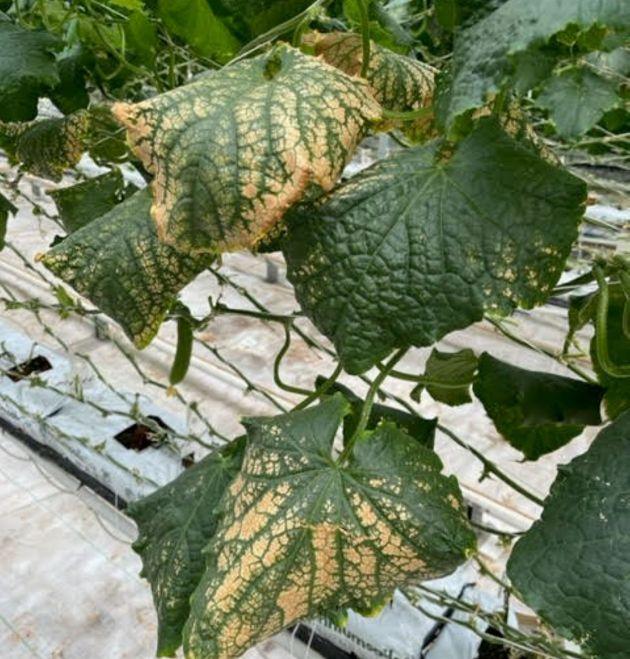
Canada’s independent garden centres have come up with innovative ways to keep busy during the quieter months of the retail cycle.
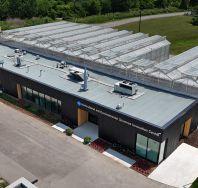
How
Where
Exploring
BY ANNE KADWELL AND STUART SERVICE
BY J LYNN FRASER

As we prepare to gather for the Canadian Greenhouse Conference in Niagara Falls, I’ve been reflecting on this year’s theme of ‘cultivating resilience.’
There’s no doubt that the Canadian greenhouse industry has weathered a number of severe storms in recent times: COVID-19, policy shifts, supply change disruptions, U.S. tariffs and increasing economic uncertainty. Through it all, however, the industry keeps finding ways to adapt, innovate and ultimately weather the storms that keep coming at it. This resiliency is a product of the sector’s commitment to coming together at events like this month’s CGC to share knowledge, resources and innovations that inspire solutions. I think, during this month of Thanksgiving, we should take a moment to offer our gratitude to the individuals, organizations and business who continue to organize, host, sponsor, attend and ultimately support events in the Canadian greenhouse industry that provide a springboard for growth.
Niagara College’s Horticultural and Environmental Sciences Innovation Centre (HESIC). I recently had a tour of HESIC’s new research greenhouse and sat down with the researchers to discuss how this incredibly cool facility with help growers reduce risk and strengthen resilience. Read more on Page 28.
On the topic of resilience, that of Canada’s independent garden centres is put to the test every time the colder months start to settle in. Our friends at the Canadian Nursery and Landscape Association (CNLA) explore the creative and practical ways that these businesses are successfully navigating the tricky shoulder season on Page 8.
When it comes to equipping growers with the know-how to manage tricky situations, Dr. Mohyuddin Mirza is in a class all his own and this month, takes a dive into climate control for smaller greenhouse operations. On Page 22, he gets into a case study where a grower lost control of the climate when growing several
‘Resiliency is a product of the sector’s commitment to coming together.’
The themes of innovation and resiliency run through this issue of Greenhouse Canada as we look at the potential for vertical farming and traditional greenhouse production to collaborate. Starting on Page 14, read up on how across Canada, growers and entrepreneurs are finding novel and efficient ways to grow up. Montreal’s Lufa Farms is literally raising the roof on what greenhouses are capable of.
You’ll see our themes also play out in our Q and A with Ashley Paling and Scott Golem from
different crops in one operation and how he advised a course correction.
Capping off this edition of Greenhouse Canada is another thought-provoking piece from our longtime Inside View columnist Gary Jones who takes the time to reflect on how growers may be feeling societal pressures to find ways to disconnect from natural gas and the challenges and possibilities associated with that.
As always, keep in touch with any thoughts and ideas about Greenhouse Canada; we love to hear from you!


The Ontario Greenhouse Vegetable Growers (OGVG) has received the Marketing Excellence Award from Produce Business magazine for its ‘Greenhouse Goodness’ digital campaign.
According to a recent OGVG press release, the campaign utilized seasonal landing pages and a mix of digital and print media. A central component was the Greenhouse Goodness microsite, which provided information on greenhouse-grown vegetable benefits, recipes, children’s activities, educational posters, and influencer spotlights. Social media platforms, including Facebook and Instagram, were also used.
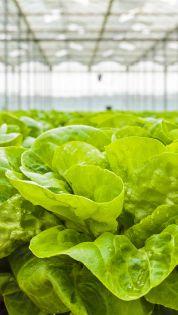
“Our growers work tirelessly to bring fresh, nutritious greenhouse vegetables to tables across North America,” said Richard Lee, OGVG Executive Director in the release.
“Greenhouse Goodness was designed not only to highlight the quality of our produce but to inspire healthier eating by making greenhouse grown vegetables part of everyday meals.”
Campaign metrics included 279,841 unique visitors to seasonal landing pages and 323,885 total page sessions. There were 977,537 tracked events, with an average of three interactions per session.
(Source: Ontario Greenhouse Vegetable Growers)
Nature Fresh Farms has announced a new partnership that expands the company’s portfolio of greenhouse-grown produce into leafy greens.
The Leamingtonbased grower shared news of the partnership with Revol Greens, a Minnesotaheadquartered grower of leafy greens with a network of state-ofthe-art greenhouses throughout the U.S., in an August blog post.
“This partnership
with Revol Greens aligns perfectly with our strategic growth plans and reinforces our commitment to advancing sustainable agriculture solutions,” said Patrick Criteser, CEO at Nature Fresh Farms in the post.
“The leafy greens segment offers tremendous potential for innovation and consumer value creation through controlled environment agriculture, and we’re excited to bring our
Rimaco Greens Inc., an Alberta-based AgTech firm, announced the launch of a fully sealed, pressurized greenhouse system. According to a recent release, this patent-pending solution is a ‘first-of its-kind.’
“We’ve applied advanced energy optimization techniques from the oil industry to farming,” said Ricardo Solano, co-founder of Rimaco Greens. “Our system doesn’t use traditional air conditioning or air exchanges. Instead, it controls temperature and humidity using thermal energy storage at scale with tightly integrated flows of air and water.”
(Source: Rimaco Greens Inc.)
proven approach to this important market category.”
Through this partnership, Nature Fresh will offer organic and conventional packaged salads produced using Revol’s specialized growing expertise and facilities. Nature Fresh will contribute its brand recognition and market reach.
“Nature Fresh Farms brings exceptional brand recognition and market reach that
perfectly complements Revol Greens’ growing capabilities,” said Dirk Aleven, Revol Greens’ president.
“This exclusive partnership creates a compelling value proposition for consumers seeking premium, sustainably grown leafy greens while positioning both companies for accelerated growth in the expanding CEA market.”
(Source: Nature Fresh Farms)
Source: ‘Gross domestic product, income and expenditure, second quarter 2025,’ Statistics Canada.
0.4 %
The rate by which real gross domestic product (GDP) declined in the second quarter of 2025
Exports declined 7.5% in the second quarter of 2025
International imports declined 1.3% in the second quarter


Featuring biochar, an eco-friendly alternative to perlite that optimizes aeration
Made from 100% renewable forest by-products, Black Bear® biochar has captured organic carbon, preventing it from entering the atmosphere. We blend this proprietary ingredient with Canadian sphagnum peat moss that’s made using responsible peatland management practices and principles. The result? A premium, grower-trusted mix that’s rooted in good.


Scan to sign up for our Grower Trial Program and experience the difference.

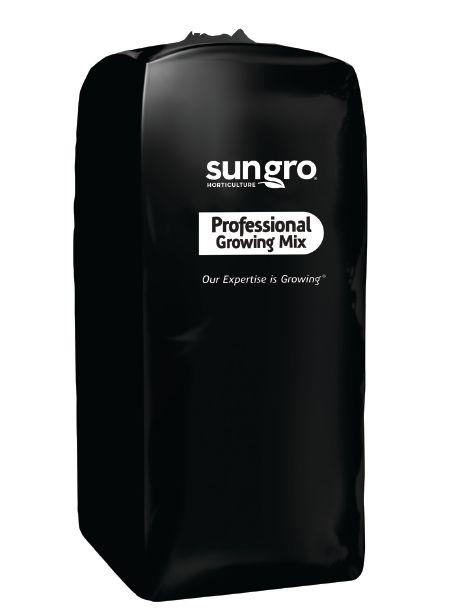
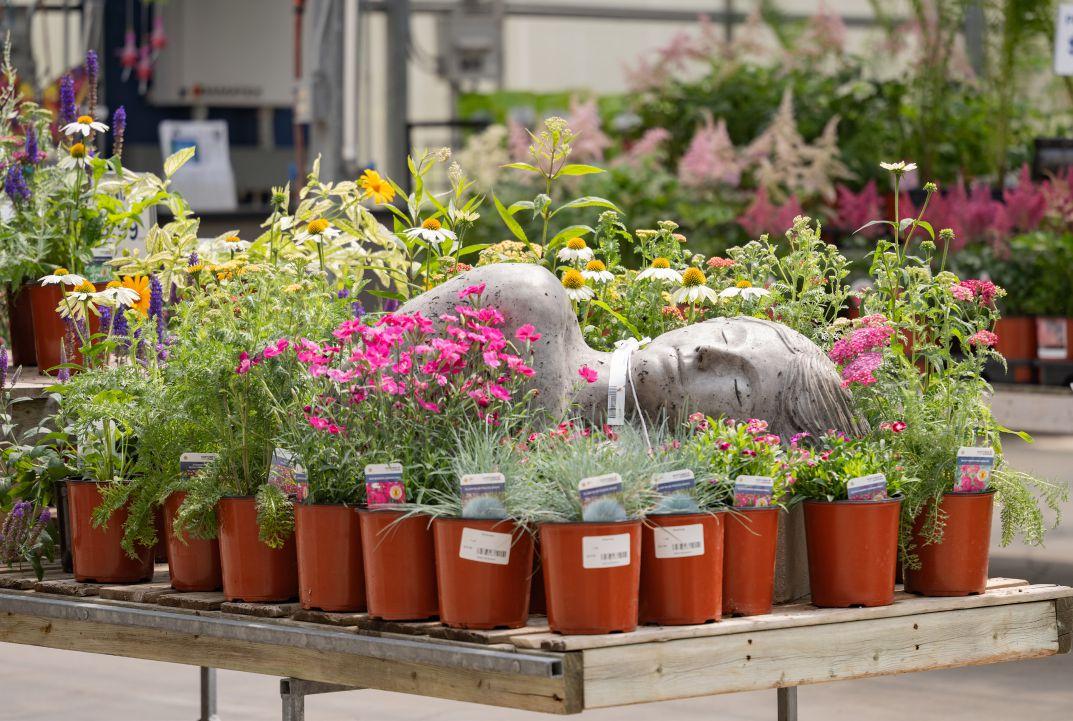
BY ANNE KADWELL AND STUART SERVICE, CANADIAN NURSERY
LANDSCAPE ASSOCIATION
For many independent garden centres across Canada, the months between September and March present a unique challenge: how to keep customers engaged when the gardening season slows and temperatures dip. Owners and operators have found creative ways to draw traffic, often transforming their stores into community hubs during the colder months. From seasonal markets to family traditions, these initiatives help bridge the gap between the shoulder season and spring’s return.
At Shelmerdine Second Nature in Manitoba, Matt Bell described a multi-layered approach that keeps momentum going throughout the fall and early winter.
“In the Fall, we hold a Fall Market with more than 60 vendor booths set up in our parking lot,”
ABOVE
Bell said. “This is a great opportunity for people who haven’t been introduced to our garden centre to come out, as well as a space for the community to gather over the weekend.”
Before switching over to their full holiday transformation, the home and garden centre hosts a six-week kids’ fair complete with small rides. Later, countless families return for “holiday photos taken with Santa and Mrs. Claus here at Shelmerdine.”
Looking ahead, Bell noted that new winter activities are on the horizon: “Yoga in the Garden, Music in the Garden, and personal or VIP shopping experiences are going to be making an appearance in 2026.”
An enticing retail display at Shelmerdine Second Nature, a home and garden store located in Headingley, Manitoba. The garden centre has established itself as a destination for consumers even in the off-season as it expanded its product lines and hosts numerous events year-round.


Staff at Grow and Gather in British Columbia have witnessed customers’ children grow up pond-side over the years. The koi pond is a popular attraction for customers and the local community. Although not a direct sales generator, the display is an opportunity for the garden centre to demonstrate pond equipment and answer questions about koi care.
Food and drink also play a role in drawing customers. Sunshine Greenhouse’s Chinos Bistro, located in Steinbach, Manitoba and run by Dorinda Penner, has proven that a cosy café atmosphere encourages repeat visits.
“Our bistro has a consistent traffic flow and patio season helps bring traffic to the yard,” she said, adding that pumpkin-
flavoured lattes and gelato are a big factor in increasing September traffic. “Customers grab a drink or gelato and want to stroll into the greenhouse when it’s cool outside.”
In British Columbia, Grow and Gather in Maple Ridge has found that its koi pond provides a surprising year-round draw.


ABOVE
Workshops span both horticultural topics, like growing herbs indoors, and lifestyle activities such as jewellery making and yoga at TERRA Greenhouses’ five locations.
“We were fortunate that our koi pond, along with several other water features, were existing elements when we purchased Trice Farms more than 14 years ago,” said co-owner Renata Trivieri. “While many of the features have been rebuilt, and the pond has had improvements made to it, it remains a big draw to our regular customers.”

At Shelmerdine Second Nature in Manitoba, fall and winter programming ranges from a Fall Market and a six-week kids’ fair to family photos with Mr. and Mrs. Claus. Debuting in 2026 are new initiatives like yoga, live music, and VIP shopping experiences to keep customers engaged through the colder months.
She added that staff have watched customers’ children grow up pond-side over the years, and that students from a nearby high school regularly stop by to ask if they can feed the fish. The feature functions like a “secret garden” Trivieri said, surprising even longtime customers who stumble across it. The pond is stocked with more than 40 koi, many of which were rescued or donated by the community, and has become a touchpoint for conversation, education, and repeat visits. The pond also allows for demonstrations of some of the garden centre’s more advanced pond equipment, and a living example to help answer customer questions about koi health and care.
“While the feature doesn’t directly create sales, it does create interest and causes folks to drop in just for a wander.”
Continued on page 36
ThinkPlants® connects breeders, rooting stations, and suppliers to give growers access to innovative genetics and a dependable supply of URC, bareroot, seed, and liners. With transparency at every step, we’re committed to supporting your success.
Learn More at ThinkPlants.com
Hemerocallis Blazing Skye™













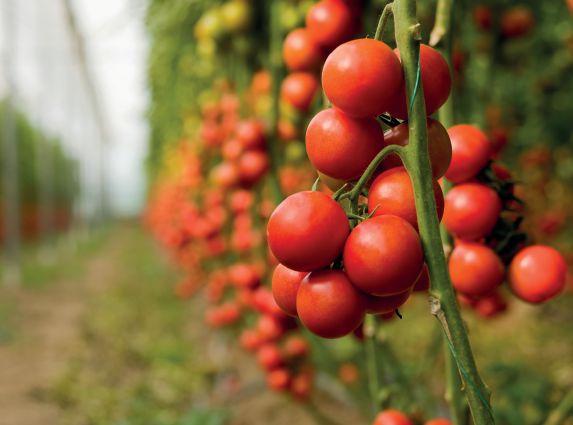





Exploring the potential collaboration of greenhouses and vertical farms
BY J LYNN FRASER
A vertical farm (VF) is a type of controlled environment agriculture. A VF, at its most basic, involves a crop that is grown in vertical stacks. This growing approach uses limited space in comparison to traditional greenhouses, which makes them suitable for urban environments or growing in areas with limited space (Mottech, 2022).
What is typically listed as advantages for VFs are their controlled humidity, climate, energy, and nutrients; it is said to require limited to no pesticide use; there is efficient use of water (they may use close to 95 per cent less water than traditional greenhouses); they are able to grow specific crops year-round as they are usually found indoors in a
MAIN
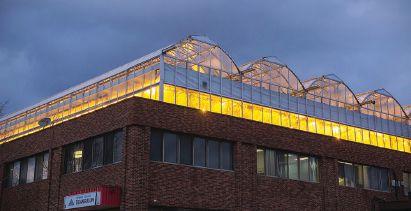
controlled space (Mottech, 2022); and that limited space means a smaller environmental footprint with high production (Funk, 2023).
Despite appearances, vertical farms and traditional greenhouses are not two solitudes. They can collaborate and accommodate each other.
“Vertical farming [can be classified] into two types: one with multilayer horizontal growing surfaces and one with growing surfaces vertically arranged,” said Dr. Youbin Zheng, of the University of Guelph’s School of Environmental Studies. “If potted ornamentals are grown in multilayer
Kale thrives inside a modular vertical farm developed by Ottawa-based company, Growcer. INSET
Montreal’s Lufa Farms’ first rooftop greenhouse, opened in 2011, in the borough of Ahuntsic.
A closer look at the rootzone of some leafy greens inside one of Growcer’s hydroponic modular farms. These units employ deep water culture hydroponics where plants sit on floating rafts with the roots in water.
systems, the same crops can be grown as a conventional system, and the same type of truck delivery can be used.
“For vertical farming, the same set of staff can be trained to grow and manage crops differently,” he adds. “We can simply divide vertical farming into two types. Both can be premanufactured off-site or set up on site.”
When considering VF use on the same premises as traditional greenhouses the disadvantages traditional growers should be aware of are the high initial costs; specialized equipment such as hydroponics and grow lights that can be “energy intensive” and expensive (Mottech, 2022). Depending on how the VF is configured it may not be as sustainable as a traditional greenhouse (Mottech, 2022). Additionally, VFs






























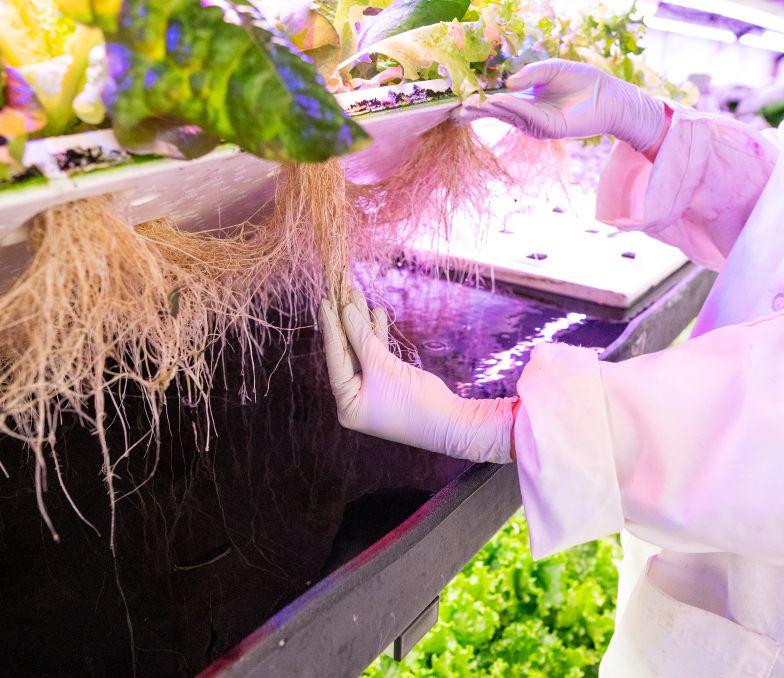


















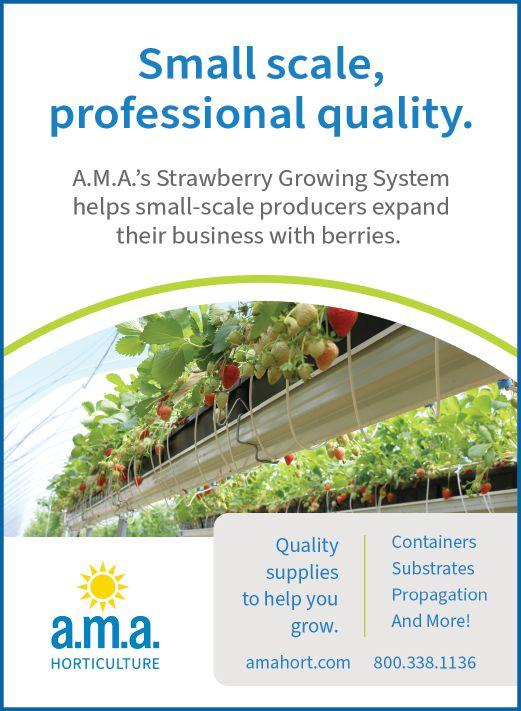
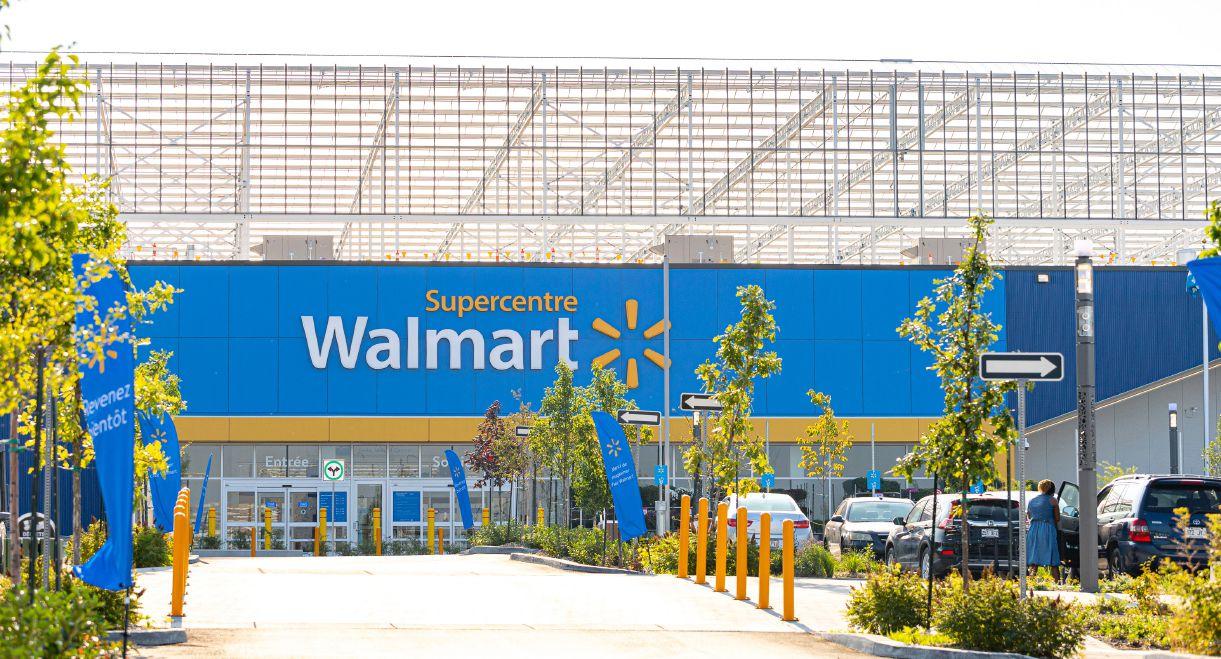
require a “delicate balance” that makes crops vulnerable to changes in their controlled environment (Funk, 2023).
Vertical farming [can be classified] into two types: one with multilayer horizontal growing surfaces and one with growing surfaces vertically arranged.
An important advantage of VFs is their adaptability to different spaces. They can be found in skyscrapers and warehouses, and other spaces usually not associated with farming such as urban environments (Funk, 2023). This is a critical characteristic in their usefulness as it is estimated that by 2050 “80 per cent of the world’s population will live in urban areas” (Funk, 2023). In present day, and in the future, many of these urban areas are/will be considered “food deserts” where there is an inability of some urban communities to access fresh fruits and vegetables (Funk, 2023). Vertical farms supply a solution to this problem — they can be a “food oasis” in an urban environment (Funk, 2023). In urban environments produce from VFs do not need extended shipping, thus reducing emissions, or warehousing, and are fresh (even harvested the night before) when consumers receive them (Funk, 2023).
ABOVE
There are a few but critical ingredients for successful collaborations of VFs with greenhouses. They involve having the right technology combined with the right partnership (Funk, 2023). According to Emily Peloquin, Public Relations for Montreal’s Lufa Farms, you need a strong foundation, literally and figuratively, to develop a vertical farm in an urban environment.
When Lufa Farms, founded by CEO Mohamed Hage and his team fifteen years ago in Montreal, was looking for buildings suitable for their vision they looked to buildings built in the 1960s and 1970s. These building choices “were not random, they were heavy structures, stable buildings.” Lufa Farms put its first, and all of its subsequent greenhouses, now six in total, on top of buildings in Montreal. It is important to do extensive homework to establish an urban greenhouse. According to Peloquin, Lufa Farms looked at Google Maps to find candidates for its plans. They then interviewed building owners.
Lufa Farms’ 127,000 square-foot hydroponic greenhouse atop the Marché Central Walmart Supercentre opened earlier this year.
DISCOVER HOW I MADE IT
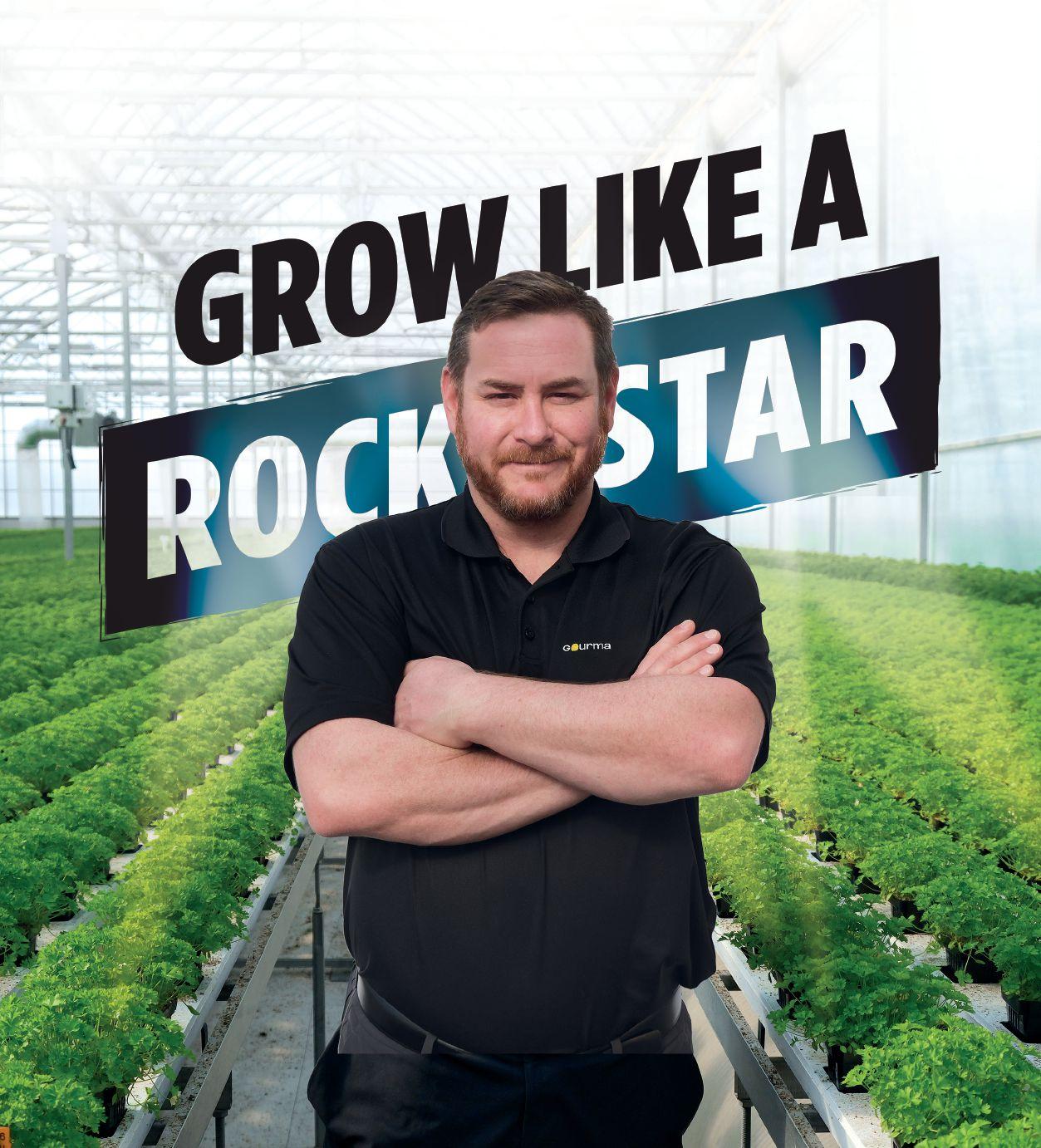

Every time we expanded or renovated a greenhouse, we didn’t just build; we optimized. Even if something worked well, we’d ask, ‘How can we do it better?’
• Water: Vertical systems can dramatically reduce water use (often >70% savings) and reduce water risk in drought-affected regions;1
• Yield: Vertical systems can massively increase output per unit footprint — attractive in urban or high-land-cost locations;1
• Energy & Operating expenses: Energy is the dominant Opex; efficiency choices and local electricity costs largely determine long-term profitability.2
• Capital expenses and ROI: Expect substantial up-front investment; ROI is achievable but sensitive to scale, automation level, crop selection and market pricing.3
• Market forecast: Canada’s verticalfarming market revenue was estimated at close to $900 million in 2024 and is forecast to grow rapidly to more than $3 billion by 2030.4
Sources:
1. Han, D. (2020). Water Demand for Vertical Farming: Advantages and Challenges (Major Project, Master of Land and Water Systems). University of British Columbia, Faculty of Land and Food Systems.
2. Canadian Manufacturing. (2024, March 14). CubicFarm releases data showing its vertical farms use 54-to-62% less energy. Canadian Manufacturing.
3. Alberta Agriculture, Forestry, and Rural Economic Development. (2021, April). Vertical Farming Case Study: Economic Assessment of Current Vertical Farming Systems Being Marketed in Alberta and Canada. Government of Alberta
4. Grand View Research. 2024. Canada Vertical Farming Market Size & Outlook, 2024-2030. San Francisco: Grand View Research.
Next, they looked at prospective buildings’ blueprints to assess, for example, water sources, energy consumption, and access points. Another issue of concern for Lufa Farms was “administrative” such as how the building was zoned.
“Municipalities [in Montreal] have been extremely enthusiastic,” Peloquin notes. Montreal, she points out, has “more urban agriculture than anywhere else in the world.” In contrast, she comments, “Toronto was an absolute headache” in regards to a proposed project.
In Montreal the municipality of Ahuntsic, where Lufa Farms’s first project was established in 2011, was “ahead of the curve in a sustainability mindset” Peloquin

Growcer co-founders, Corey Ellis and Alida Burke outside one of their modular units.
observes. This forward thinking is found throughout Quebec where there is support for entrepreneurs, investors, stakeholders, and clients (customers) who are working to improve food security in the province. In the Ahuntsic neighbourhood of Montreal the Lufa Farms’s greenhouse, the “world’s first commercial rooftop greenhouse” according to their website, measures 31,000 square feet and uses both vertical and horizontal growing systems such as troughs for vining plants and nutrient film techniques for microgreens (website). The Ahuntsic greenhouse is capable of creating compost, recirculating rainwater, and can test crops such as growing bananas.
Lufa Farms’s operations are profitable, innovative, efficient, and sustainable. They
use renewable energy and sustainable lighting such as LEDS. They work with 300 businesses, local and otherwise, to offer a variety of complementary goods to what they grow through processes that include physical delivery and use online systems to process deliveries and a blog among other functions. Their market research keeps them informed about the lifestyle of their clients and their budgets. Lufa Farms calls their community “Lufavores” (website). Both the head and the heart come together in Lufa Farms. In addition to its commercial efforts, Lufa Farms has a foundation to help mitigate food insecurity.
Sky Greens Vertical Farming System, established in 2009, uses “rotating tiers of growing troughs mounted on a A-shape

Sollum’s advanced dynamic lighting solution delivers measurable results.
By adapting in real time to crop stage and conditions, growers achieve higher yields and quality, and reduced energy use.
It’s about increasing productivity, season after season.


This article discusses following points:
• Multiple crops are grown in smaller greenhouses and the biggest issue is lack of optimum climate control.
BY DR. MOHYUDDIN MIRZA
BELOW
Smaller greenhouses serve a variety of important purposes but they come with some big climate management challenges.
• High or low temperatures, high and low relative humidities affect the crop performance.
• CO2 levels can reach below ambient and thus affect yields.
• Insect and diseases can significantly affect the crops.
• Strategies to manage such greenhouses.
I deal with many greenhouse crop growers whose operations can be considered “small” in size. Varying anywhere from 3,000 sq.-ft. to 40,000 sq.-ft., these operations serve a variety of purposes, incluuding growing vegetable seedlings for their market gardens and full tomato, cucumber, pepper and other crops to supply the demands of a market garden. Recently, I visited a greenhouse growing eggplants, beans and many herbs like arugula, basil and other leafy crops.
Growing multiple crops in the same greenhouse can present many challenges, especially as it relates to climate control and pests. Consequently, yields can be lower when compared to good commercial crops. Let me take you through a one-acre, plastic greenhouse growing cucumbers, tomatoes, peppers, eggplants, beans and herbs.

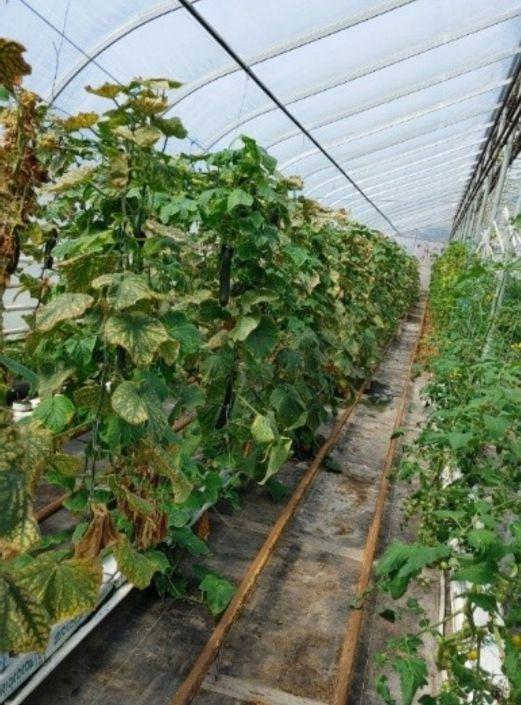
Climate control is the number one challenge in such greenhouses. Different crops require different temperatures, both day and night. Growers who struggle to achieve the desired 24-hour temperature and can lose control over wether or not a plant is vegetative or generative and maintaining a balanced growth.
In this case, the grower had peppers, eggplants and beans in addition to cucumbers and tomatoes. The cucumber crop was under a big stress. The day temperature was going above 35ºC and relative humidity was 35 per cent. This resulted in a very high vapour deficit or moisture deficit. The symptoms on leaves appeared to be much like magnesium deficiency, however, it is “transpiration stress.” This happens when the leaf temperature is close to air temperature and roots cannot meet the transpiration water loss.
The importance of transpiration from leaves and fruit skin must be understood properly. Just like in economics, there’s a balance between water demand (driven by transpiration) and water supply (provided by irrigation). In a greenhouse where multiple crops are grown, each crop will likely require different day and night temperatures, which means the demand for water for each crop will be different. If the irrigation system is not computer controlled and adjusting to each’s crops needs, all plants will get the same amount of water and nutrients.
In Canadian climates, we have challenges of both low relative humidity, like in the prairies, and high humidity in coastal climates. Both humidification and dehumidification systems are required. In this context, we need understand the

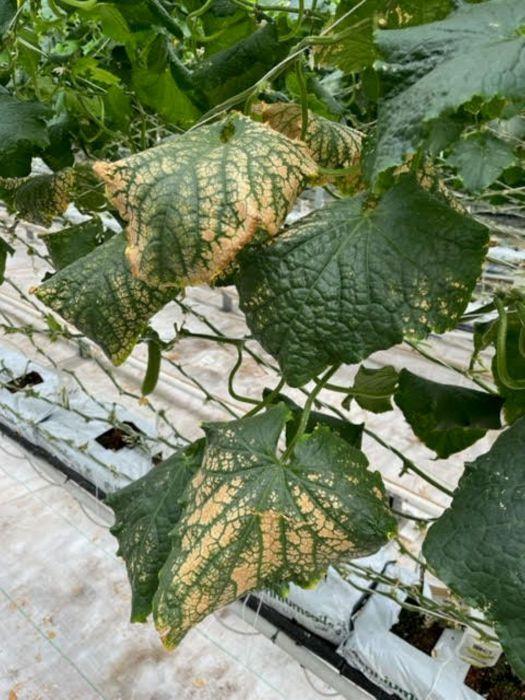
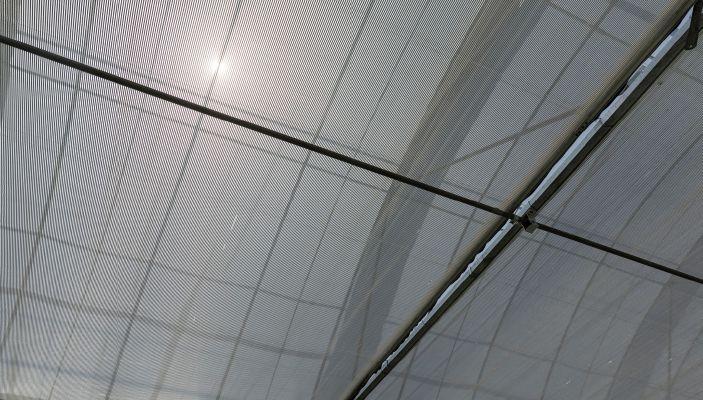

A little bit of shade goes a long way to controlling temperatures in the greenhouse
relationship between temperature and relative humidity. Simply put, warm air can hold more moisture than cold air. When the temperature rises but no extra moisture is added, relative humidity decreases. Conversely, when the temperature drops, relative humidity increases — because cooler air has a lower capacity to hold water vapour.
In smaller greenhouses the relative humidity is a big challenge. It could be very dry where relative humidity drops below 30 per cent and temperature rises to 30ºC and above. That is evident in Images 1, 2 and 3. The grower attempted to ventilate more by opening the doors to bring the temperature down, but the relative humidity also drops resulting in symptoms that look like sun scalding. The photosynthetic area of leaves is significantly reduced and thus much less food is available to the plant for its needs. There was very limited new growth visible, lots of new cucumbers aborted and few existing fruits in poor condition.
Warm air can hold more moisture than cold air
Besides climate-related leaf symptoms there was an abundance of pests and diseases. Spider mites forming webs on eggplants, quite a few aphids on peppers, whiteflies on peppers and spider mites also on beans. It was clear biological controls were not working.
Tomatoes are also affected under such conditions by showing smaller, darkgreen leaves, clusters are or poor quality, blotchy ripening of fruit and in many cases of severed blossom end rot.
Images 4, 5 and 6 depict problems in three different greenhouses. Image 4 is an example of very high relative humidity whereby adventitious roots are developing on stems. Botrytis grey mold




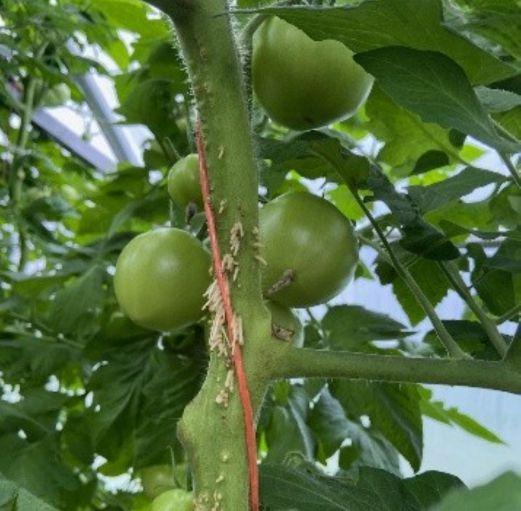
can easily target these plants if night temperature dips to dew point. Image 5 shows where very intense heat “toasted” the top parts of plant and there was also accidental dosing of high fertilizer rates. The EC in the root zone was very high.
Image 6 is an example of a tomato crop where grower used “garden” fertilizer which were labelled for tomatoes.
One can see poor flower and fruit set and thin, spindly

growth. An interesting observation that this tomato grower was using same day and night temperatures on his thermostat. The grower believed that by using warmer night temperature, the crop can grow fast and will get large fruit.
I was able to convince him to use cooler night temperatures without going into too much details of photosynthesis and respiration.
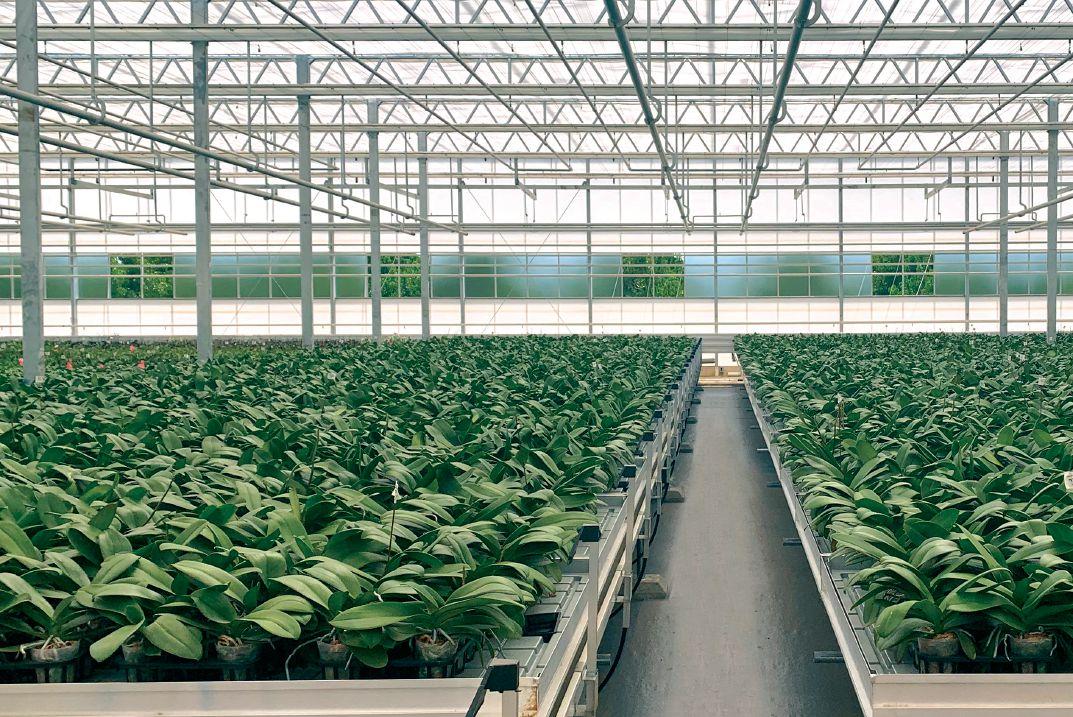
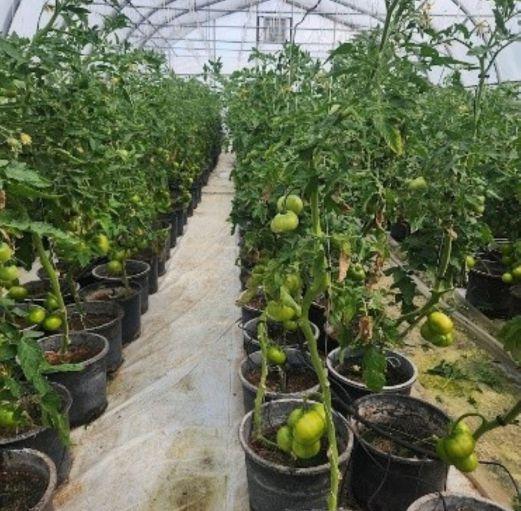
• For better temperature management, shade the roof with shading compounds. Reducing the amount of light coming into the greenhouse helps to reduce the temperature. Sometimes the thinking is that more light equates to better production, however, light contributes to heat as well. Only about five per cent is used for photosynthesis, the rest is used for heat.

The importance of transpiration from leaves and fruit skin must be understood properly.
I remember a time when greenhouse roofs were shaded with hydrated lime or flour slurry, so the practice of applying shading compounds is an old one but effective nonetheless. With the arrival of inside screens, growers are in a better position to achieve desired light reduction.
• If possible, install misting or fogging systems. Fogging systems may require more investment but simple misting systems are relatively economical. I have seen many smaller growers using a fan to blow water across the greenhouse and also wetting the floor frequently during hot periods.
• Dehumidification may be achieved by controlling venting.
• Pests must be monitored regularly especially knowing the fact that eggplants can be a magnet for spider mites and white flies. Diseases like botrytis, powdery mildew and fusarium must be monitored.
I found lots of good information in Greenhouse Canada. Have copies handy at the lunch table so that staff could take advantage of this valuable knowledge resource.
Dr. Mohyuddin Mirza is an industry consultant in Alberta and can be reached at drmirzaconsultants@gmail.com



